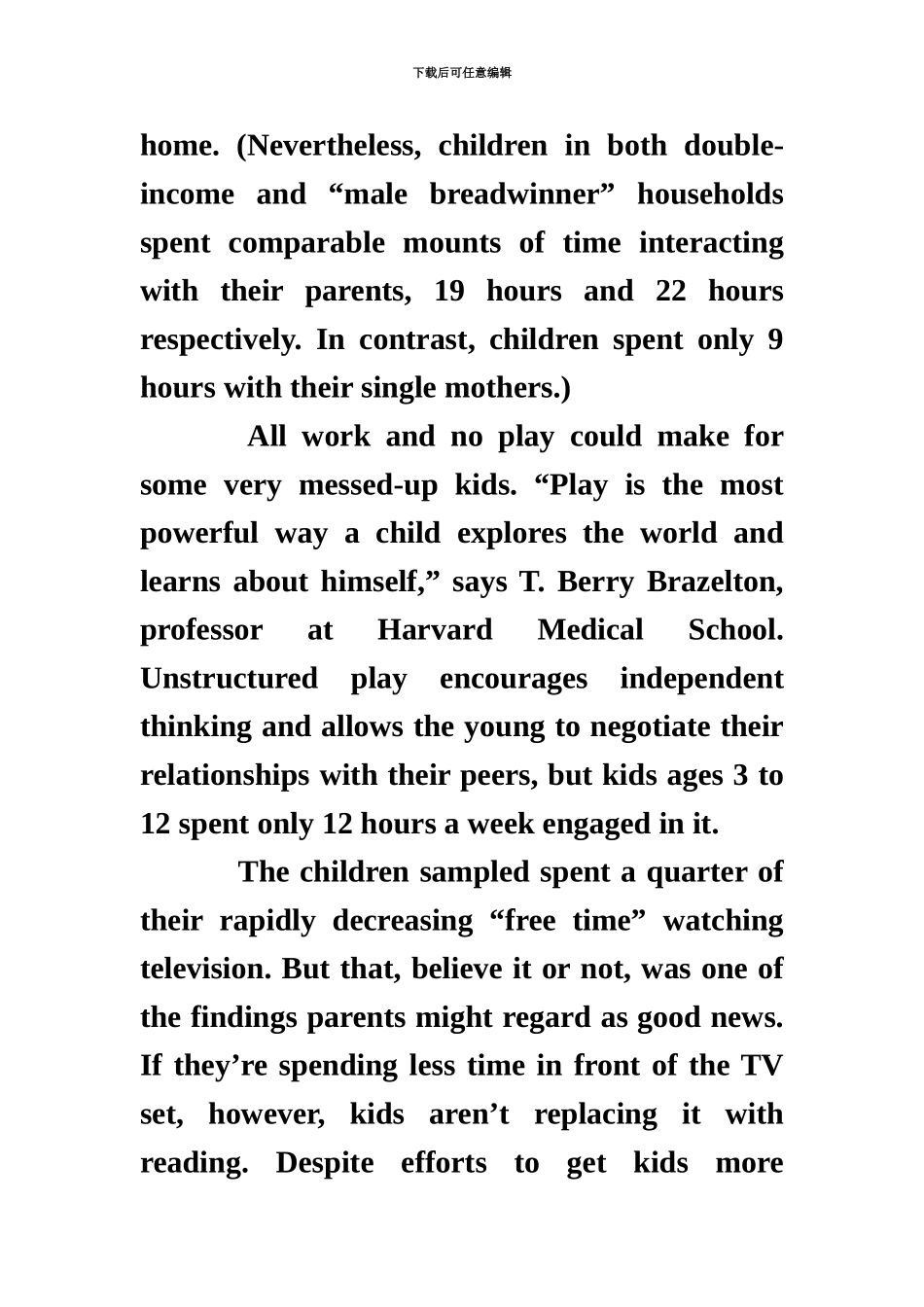下载后可任意编辑大学英语四级真题试卷含答案下载后可任意编辑 6 月四级试题Part II Reading Comprehension (35 minutes)Passage OneQuestions 21 to 25 are based on the following passage: On average, American kids ages 3 to 12 spent 29 hours a week in school, eight hours more than they did in 1981. They also did more household work and participated in more of such organized activities as soccer and ballet (芭蕾舞). Involvement in sports, in particular, rose almost 50% from 1981 to 1997: boys now spend an average of four hours a week playing sports; girls log half that time. All in all, however, children’s leisure time dropped from 40% of the day in 1981 to 25%. “Children are affected by the same time crunch ( 危机) that affects their parents,” says Sandra Hofferth, who headed the recent study of children’s timetable. A chief reason, she says, is that more mothers are working outside the 下载后可任意编辑home. (Nevertheless, children in both double-income and “male breadwinner” households spent comparable mounts of time interacting with their parents, 19 hours and 22 hours respectively. In contrast, children spent only 9 hours with their single mothers.) All work and no play could make for some very messed-up kids. “Play is the most powerful way a child explores the world and learns about himself,” says T. Berry Brazelton, professor at Harvard Medical School. Unstructured play encourages independent thinking and allows the young to negotiate their relationships with their peers, but kids ages 3 to 12 spent only 12 hours a week engaged in it. The children sampled spent a quarter of their rapidly decreasing “free time” watching television. But that, believe it or not, was one of the findings parents...


